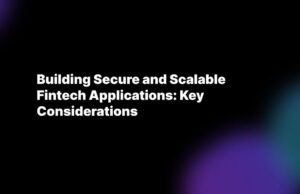Recent years have seen the rise and development of other cryptocurrency ecosystems. Each ecology has its own set of benefits and drawbacks. The majority of existing Blockchains have different designs and cannot communicate. Cross-chain Bridge was developed to solve this issue. What then is the Cross-chain Bridge?
Definition of Cross-chain Bridge
Cross-chain Bridge enables the movement of crypto assets, tokens, and data across Blockchains. It allows assets to flow through chains without being segregated, as was previously the case.
Each blockchain may be seen as a nation. And each of these nations will have its own set of laws, which citizens must abide by. Almost every nation has its own currency standard, making it very difficult to use one country’s money in another.
Regarding Blockchain, each blockchain has a unique architecture and set of regulations. When confirming transactions on chains, nodes must adhere to Blockchain’s rules to maintain security. Each distributed ledger has its own token standard.
Blockchain’s cross-chain movement is inevitable
Blockchain and the real world both value trade. Each Blockchain contains a fixed quantity of assets and users, not only Bitcoin and Ethereum as previously.
Consistently, users search for new opportunities. Cross-chain bridges are critical at this level because they never want their assets tied to a single chain. When a bridge exists, the asset is instantly accessible on the opposing chain following a single transaction.
Or, Aggregator-like apps let clients deposit tokens in this chain, while farm operations happen on a different chain. Cross-chain bridges connect two or more chains, increasing profits and possibilities.
Quick Reminder: If you need to do a cross-chain swap, use Atomex.
Cross-chain bridge types
Although there are several variations, Cross-chain bridges may be categorized into two primary categories: centralized and decentralized.
Cross-chain centralized bridge
Cross-chain Center Bridge requires third-party trust. These parties will act as middlemen between chains, accepting user funds on one and minting wrapped tokens on another.
- Advantages: Simple, easy and suited for beginning users.
- Disadvantages: Users are reliant on third parties and have full access to the sender’s assets.
Even if the probability of customers’ funds being stolen is low when dealing with a well-known business like Binance, Centralized Bridge has numerous other drawbacks.
Decentralized Cross-chain bridge
The Decentralized Cross-Chain Bridge no longer needs consumers to place their faith in third parties.
A decentralized Cross-chain Bridge is a collection of validators’ assets. With additional validators, the bridge is decentralized. A user transfers assets from one chain into the pool, validators confirm the transaction, and the pool mints tokens in another chain’s blockchain. Also, these validators’ environment is a blockchain. It contains authentication, consensus, and even listening. To put mint wrapped tokens on another chain, a peer-to-peer network and transactions must be confirmed.
- Advantages: Transparent because everything is provable on the blockchain.
- Disadvantages: The Decentralized Cross-Chain Bridge doesn’t provide safety when current bridge designs are dangerous. Decentralized Cross-chain Bridge’s asset pool is vulnerable. The $611 million Poly Network incident is an attack on a cross-chain project.
Decentralized and centralized bridges differ in how validators are encouraged to ensure validity. How to retain validator functioning during transaction verification.




